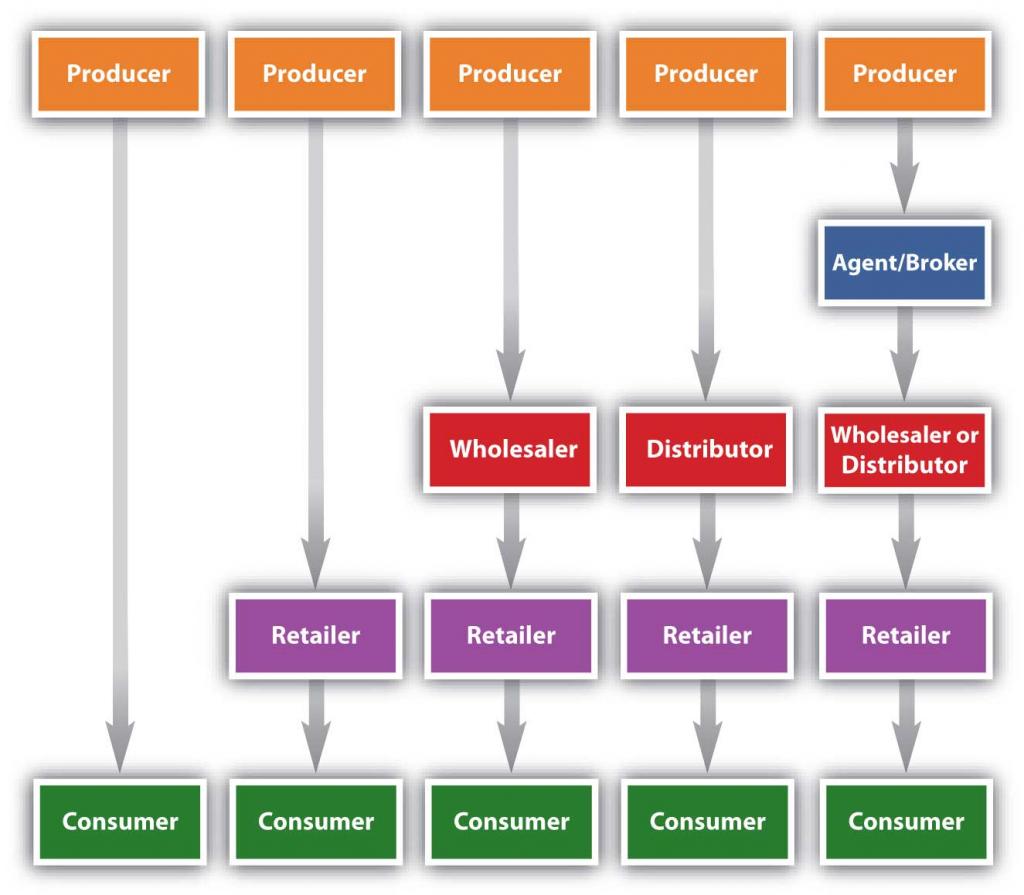8.2: Typical Marketing Channels
- Page ID
- 5009
Learning Objectives
- Describe the basic types of channels in business-to-consumer (B2C) and business-to-business (B2B) markets.
- Explain the advantages and challenges companies face when using multiple channels and alternate channels.
- Explain the pros and cons of disintermediation.
- List the channels firms can use to enter foreign markets.
Figure 8.4 “Typical Channels in Business-to-Consumer (B2C) Markets” shows the typical channels in business-to-consumer (B2C) markets. As we explained, the shortest marketing channel consists of just two parties—a producer and a consumer. A channel such as this is a direct channel. By contrast, a channel that includes one or more intermediaries—say, a wholesaler, distributor, or broker or agent—is an indirect channel. In an indirect channel, the product passes through one or more intermediaries. That doesn’t mean the producer will do no marketing directly to consumers. Levi’s runs ads on TV designed to appeal directly to consumers. The makers of food products run coupon ads. However, the seller also has to focus its selling efforts on these intermediaries because the intermediary can help with the selling effort. Not everyone wants to buy Levi’s online.
Figure 8.4 Typical Channels in Business-to-Consumer (B2C) Markets

Figure 8.5 Typical Channels in Business-to-Business (B2B) Markets

Figure 8.6

Name it, and your company can probably buy it from Grainger Industrial Supply.
Gemma Stiles – Screws – CC BY 2.0.

